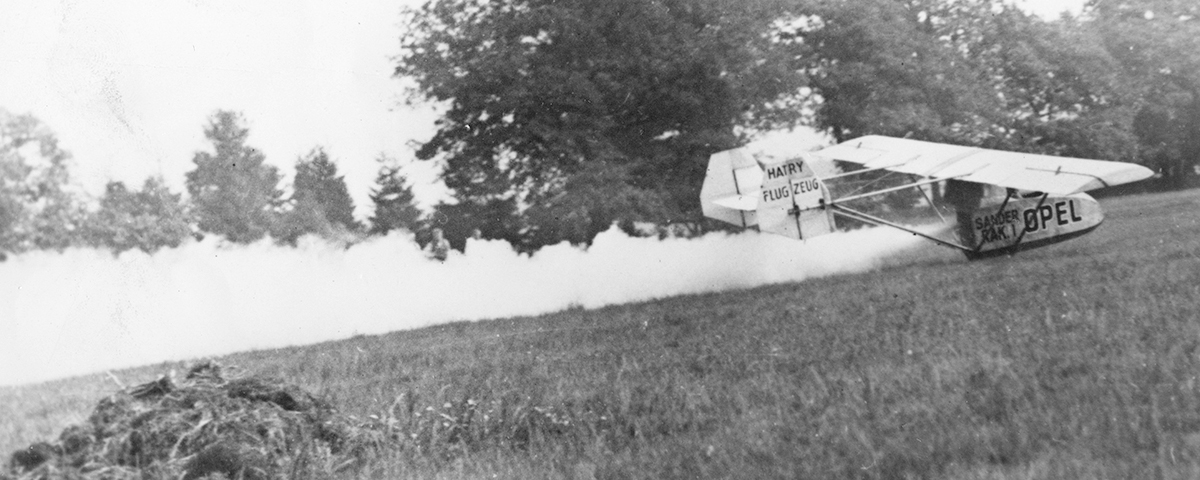June 11, 1928, Wasserkuppe, Germany— The world’s first rocket-propelled manned aircraft took to the sky. The sailplane, designed by Alexander Lippisch and called the Ente (German for “duck”), was powered by two black-powder rockets attached to skids beneath the fuselage. The rockets were intended to burn one after the other, providing continuous thrust for about 30 seconds each. After one false start, test pilot Fritz Stamer took off and completed a one-mile loop around a mountain airstrip. On the second flight the team decided to try firing both rockets at once, and one of them exploded on takeoff. Stamer managed to land safely, but the Ente was burned beyond repair.
This overreach was not surprising when one looks beyond Stamer to the team that designed the experiment. First, there was the financier: Fritz von Opel, heir to the founder of Germany’s largest automobile company and at the time its chief of publicity. To that end, Opel staged a series of rocket tests in 1928—cars, trains and even sleds were fitted with boosters. Opel’s biggest headline-grabber that summer was his rocket-car run at the Avus racetrack in Berlin on May 23. His speech before the test was carried live on German radio, and in front of a crowd 2,000 he briefly reached the then-fantastic speed of 143 mph.
Opel’s partner, Max Valier, had been on a one-man crusade to popularize rocketry in the German press since the early ’20s, and it was he who convinced Opel of the publicity value of such tests. Valier took a participatory approach to his experiments, at one point trying out a rocket car himself: “I was only sorry,” he wrote of the experience, “that the thrust no longer took effect, for the sensation of great acceleration during the first two ignitions had already been so delightful that I only wished that a dozen more ignitions would follow.”
Following the 1929 stock market crash, Opel was directed by his corporate superiors to abandon the rocket experiments. Valier, hands-on to the end, was killed in a lab accident in 1930. There was little future in their method, regardless—it took the development of liquid propellant to make rockets truly viable. But the inspirational value of their efforts cannot be discounted. “When I was 12 years of age,” Wernher von Braun recollected in 1963, “I had become fascinated by the incredible speed records established by Max Valier and Fritz von Opel. So I tried my first practical rocket experiment.” His decision would affect history on both sides of the Atlantic.
Originally published in the May 2007 issue of Aviation History. To subscribe, click here.





